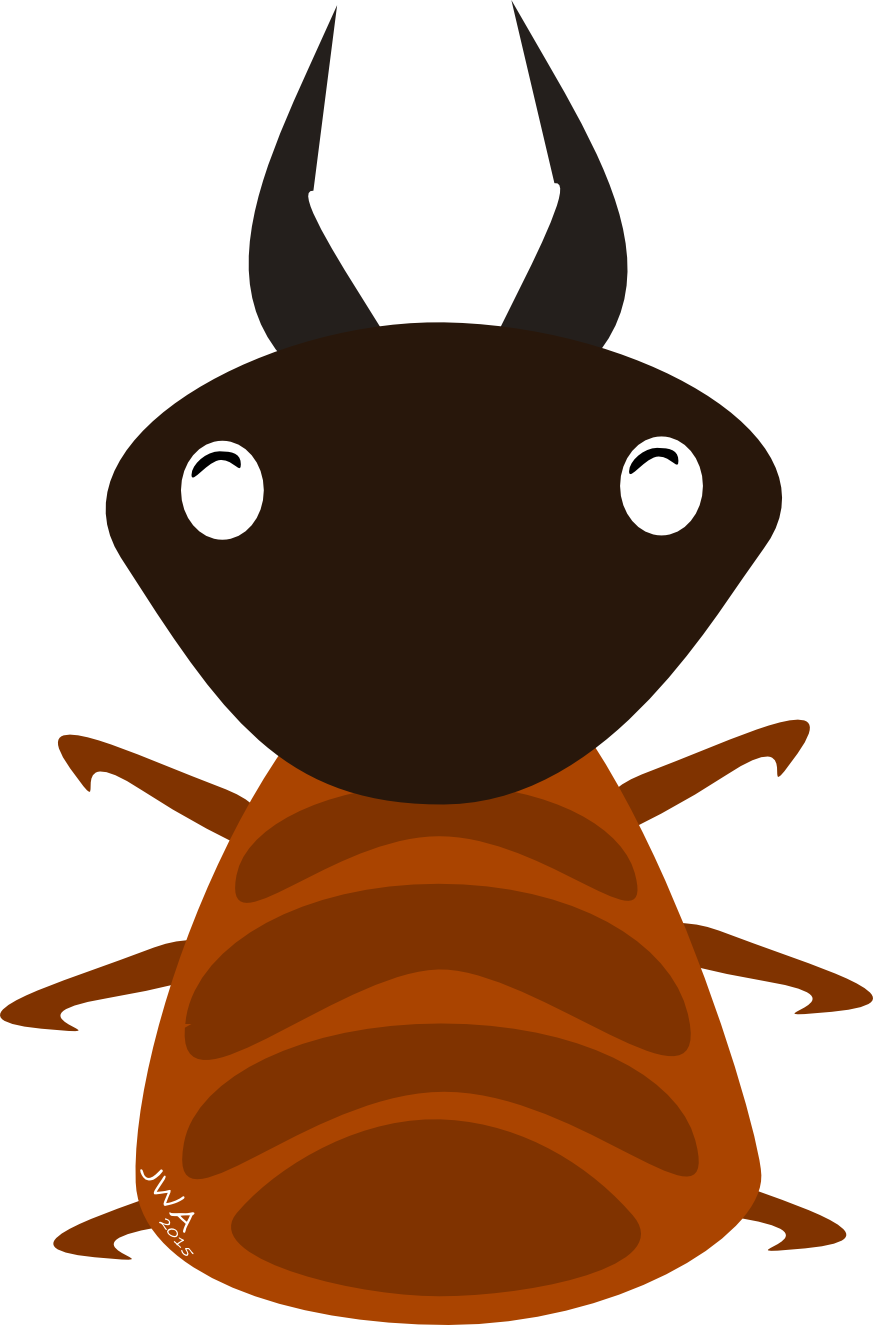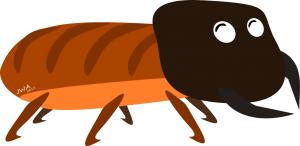While putting up butterfly traps on a game farm in Kitwe (Zambia), I noticed a strange noise, like the melodic shake of maracas, coming from the leaf litter. I looked at the ground where the sound appeared to be coming from, but I couldn’t see anything, there was no obvious animal or movement. After disturbing the leaf debris I uncovered the source of the noise and, to my surprise, found termites vibrating against the leaf material. Speaking to the farmers I realised that this is a common phenomenon.
Using their heads the termites smack the leaf litter repeatedly, generating a rhythmic and unified beat. The Soldiers are the sole performers and seem to prefer bashing their heads on the underside of material where they are out of sight. It was clear that these little percussion fanatics were trying to communicate something, but what and to whom?
Several studies suggest this drumming behaviour is used to communicate information to colony members. Termites are prey to many animals including aardvarks and pangolins as well as smaller beasts such as ants. Soldiers that produce this headache- inducing signal can excite other soldiers into drumming and create a long distance alarm call which stimulates escape responses in workers [1].
Head drumming can also be used to prevent the spread of pathogens where, individuals infected with harmful doses of fungal spores, drum to tell others to keep their distance [2] . Furthermore, termites have been found using the signal to tell others of foraging opportunities and food quality [3]. Whether or not this signal provides an alarm system or an announcement for ‘all you can eat’, this drumming is clearly used to inform colony members and influence their behaviour.
The termites I encountered in Zambia were most likely sounding an alarm, as I only witnessed this behaviour when I disturbed the leaf litter. However, it got me thinking:
- Can termites use vibrations to communicate to non-colony members?
Perhaps this drumming behaviour can be used as a battle cry to influence/deter the advances of rival colonies or invading ants. Both ants and termites are sensitive to vibrations. Drumming may be used to exploit the predisposed sensory mechanisms of foreign insects, disorientating them or preventing recruitment behaviour of scouts.
- Do termites drum in response to pheromones of non-colony members?
Termites have been shown to start drumming or jerking when disturbed by vibrations, air flow, light or sound [4]. Perhaps they also initiate drumming in response to pheromones produced by predatory ants, different termite species or rival colonies of the same species.
- Can termites alter the drumming signal to convey different information?
Currently research has only investigated drumming behaviour within species for the transfer of one message (either alarm or foraging). However, some species might alter their drumming signal to switch between different messages and this would likely be context dependent.
This could be a really interesting piece of research, especially since the understanding of termite communication could help resolve human-wildlife conflicts. Termites are a common pest, chewing wood and damaging the foundations of houses. However, small vibrations could be used as a form of pest control [5], deterring the termites from residential areas.
References
-
Hager, F. a & Kirchner, W. H. 2013 Vibrational long-distance communication in the termites Macrotermes natalensis and Odontotermes sp. J. Exp. Biol. 216, 3249–56. (doi:10.1242/jeb.086991)
-
Rosengaus, R. B., Jordan, C., Lefebvre, M. L. & Traniello, J. F. a. 1999 Pathogen Alarm Behavior in a Termite: A New Form of Communication in Social Insects. Naturwissenschaften 86, 544–548. (doi:10.1007/s001140050672)
-
Evans, T. a., Inta, R., Lai, J. C. S. & Lenz, M. 2007 Foraging vibration signals attract foragers and identify food size in the drywood termite, Cryptotermes secundus. Insectes Soc. 54, 374–382. (doi:10.1007/s00040-007-0958-1)
-
Hertel, H., Hanspach, a. & Plarre, R. 2010 Differences in Alarm Responses in Drywood and Subterranean Termites (Isoptera: Kalotermitidae and Rhinotermitidae) to Physical Stimuli. J. Insect Behav. 24, 106–115. (doi:10.1007/s10905-010-9240-x)
-
Polajnar, J., Eriksson, A., Lucchi, A., Anfora, G., Virant-Doberlet, M. & Mazzoni, V. 2015 Manipulating behaviour with substrate-borne vibrations – potential for insect pest control. Pest Manag. Sci. 71, 15–23. (doi:10.1002/ps.3848)


